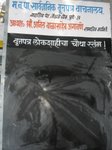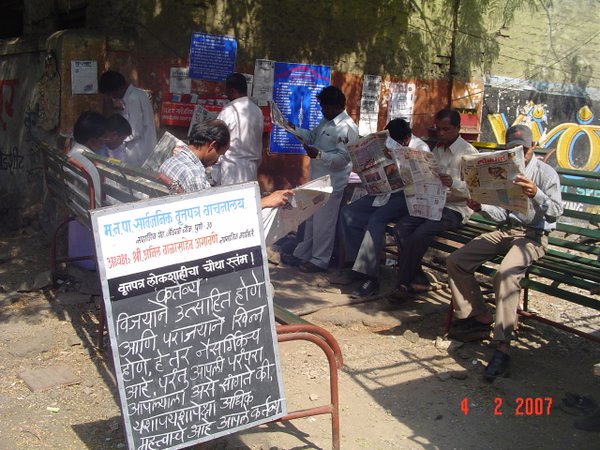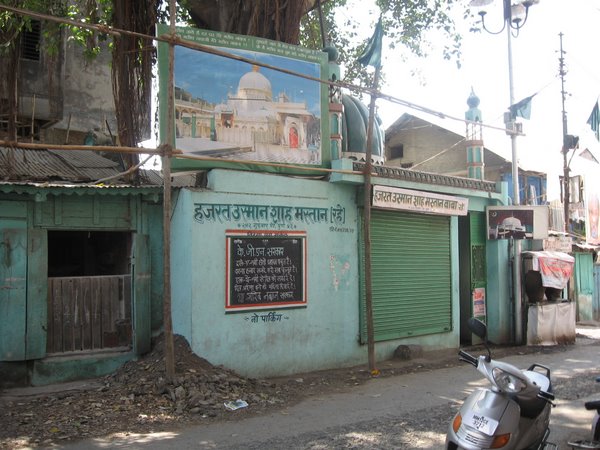
The exercise of locating vartaphalaks in the city was interesting. It led me just about everywhere. Gullis, mohallas, bastis, peths in the city. Bazaars, durgahs, dhobi ghat, taalim, rickshaw stands. Ganesh mandals, ‘young circles’, political party offices. Busy chowks and traffic-clogged main roads. The objective of providing this inventory of places is to demonstrate the two defining features of a vartaphalak – it is essentially found in community public space. And it always represents a collective, be it a Ganesh mandal, a workers’ union or a specific caste group. This makes a vartaphalak a social phenomenon.
The images that follow are familiar, everyday images. And therein is the point. Vartaphalaks are an inseparable part of the city’s landscape and of our everyday lives. To me they seemed to stand in their places stoically as life went on around them, looking upon the happenings and as we will see further, reflecting these happenings as well.
In this picture can be seen a vartaphalak adjoining a chawl in Budwar Peth.





No comments:
Post a Comment